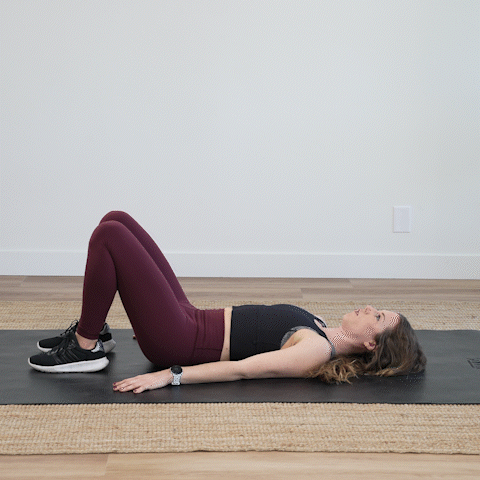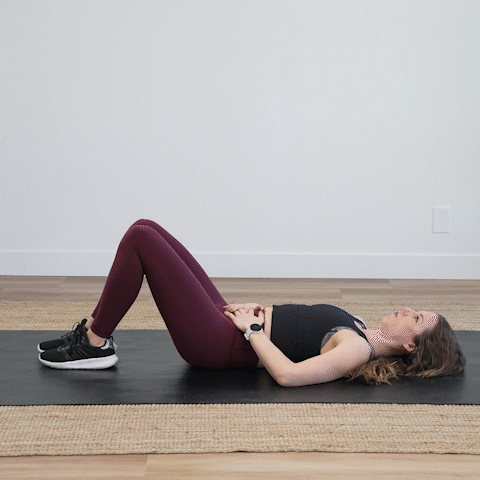Published 2/23/2025, updated 12/8/2025
The pelvic floor is a term widely known in the realm of women’s health and fitness but is often neglected as part of a typical workout program. Most often discussed in the context of women’s health issues, specifically in pre-and post-natal fitness programs, it might be surprising to know that both women and men have a pelvic floor and can benefit from pelvic floor training. Anybody interested in improving their pelvic health by strengthening the pelvic floor can improve from this type of training—not just new or expecting mothers.
What exactly is the pelvic floor? Think of it as a network of fascia, ligaments, and muscles stretching across the base of your pelvis. The main function of this specific group of connective and muscle tissue is to support your pelvic organs and contribute to pelvic and spinal stability.(1) This in turn maintains optimal bladder, bowel, and sexual function. Lack of pelvic floor stability or pelvic floor weakness (also known as hypotonic) can potentially lead to various health issues, including low back, pubic joint, and tailbone pain, urinary or bowel incontinence, or organ prolapse.(2)
How to Activate the Pelvic Floor Muscles (a.k.a. Kegels)
Everyone has heard of the Kegel exercise, but how do you know if you are engaging the muscles properly? One major roadblock that many people encounter in pelvic floor training is not being able to “find” and activate the pelvic floor. And understandably so, it’s tricky business. However, to get the most out of pelvic floor training, this is an important step to take before working on the exercises below.
A great place to start with learning to contract the pelvic floor is to pretend as if you are stopping the flow of urine.(3) From there, visualize a lift in your pelvic floor and engage your deep core muscles. Try to avoid clenching your glutes and isolate the activation to your pelvic floor muscles.(4) Remember to breathe!
If you are still having significant trouble achieving this contraction, consider seeking out the expertise of a physical therapist or pelvic floor specialist. They can help you dial in your ability to engage the pelvic floor muscles before taking your training further.
8 Exercises to Strengthen Your Pelvic Floor for a Stronger, Toned Core
Once you have become a master of “turning on” your pelvic floor, you can add on the following 8 exercises to further encourage a stronger pelvic floor and core:
1. Posterior Pelvic Tilt With Kegel activation
Equipment Needed: None

Lay on your back with your knees bent and feet flat on the ground. Start by activating your pelvic floor muscles by performing a Kegel, then rotate your pelvis towards the ground so your lower back is flush with the floor. You should no longer feel space between your low back and the ground. Hold this position for a count of 5. Perform 3 sets of 10 reps.
2. Bent Knee Fall Out
Equipment Needed: None

Lay on your back with your knees bent and feet flat on the ground. Start by performing a Kegel and posterior pelvic tilt. Hold this position and tighten your core as you lower one knee out to the side, and then the other, in an alternating fashion. Keep your torso glued to the floor by keeping your core activated throughout the entire movement. Perform 3 sets of 15 on each side.
3. Transverse Abdominis March
Equipment Needed: None

Lay on your back with your knees bent and feet flat on the ground. Start the exercise by performing a Kegel and a posterior pelvic tilt. Tighten your core and lift one foot off the ground until your knee is directly over your hip, keeping your shin parallel to the mat. Place your foot back on the ground and repeat on the opposite side, alternating back and forth. Perform 3 sets of 15 reps on each side.
4. Transverse Abdominis Heel Drop
Equipment Needed: None

Lay on your back with your knees bent and feet flat on the ground. Start the exercise by performing a Kegel and a posterior pelvic tilt. Tighten your core and lift both feet off the floor until your shins are parallel to the ground. Slowly drop one heel to touch the ground and lift it back up to the starting position. Repeat on the opposite leg, then alternate back and forth. Perform 3 sets of 15 reps on each side.
5. Dead bugs
Equipment Needed: None

Lay on your back with your knees bent and feet flat on the ground. Start the exercise by performing a Kegel and a posterior pelvic tilt. Tighten your core and lift both feet off the floor until your shins are parallel to the ground. Extend your arms up towards the ceiling. Extend your right arm and left leg in opposite directions. Return to your starting position and repeat on the opposite side, then alternate back and forth. Perform 3 sets of 15 reps on each side.
6. Bird Dogs
Equipment Needed: None

Start in a tabletop position, with your wrists under your shoulders and knees under your hips. Perform a Kegel and posterior pelvic tilt. Tighten your core and extend your right arm and left leg in opposite directions, keeping both your hips and shoulders square. Return to your starting position and repeat on the opposite side, then alternate back and forth. Perform 3 sets of 15 reps on each side.
7. Standing Towel Pull
Equipment Needed: Towel

Start standing with your feet hip-width apart and place a small or folded towel under your right foot. Perform a Kegel and activate your core as your slide your right leg out to the side and then back to the center. Repeat 10 times, and then switch legs. Perform 3 sets on each side.
8. Squat w/Hip Adduction
Equipment Needed: Pillow, Pilates ball, or Yoga block

Start standing with your feet hip-width apart, and place a firm pillow, Pilates ball, or yoga block between your knees. Make sure the item you are using is firm enough to keep your knees in alignment with your hips. Perform a Kegel, tighten your core, and sit your hips back into a squat. Perform 3 sets of 15 reps.
Overall, these are great exercises to add to any training program for a stronger, optimally functioning pelvic floor and core. In turn, this contributes to better general health and quality of life, something we can all benefit from no matter where we are in our fitness journey. Get ready to boost your core strength and build your core foundation from the inside out!
*As with starting any new training program, check with your doctor to see if these exercises are right for you, especially if you are experiencing symptoms of pelvic floor dysfunction. *




























Add Your Name & Email
Please enter your name and email to continue.We won’t display your email publicly.